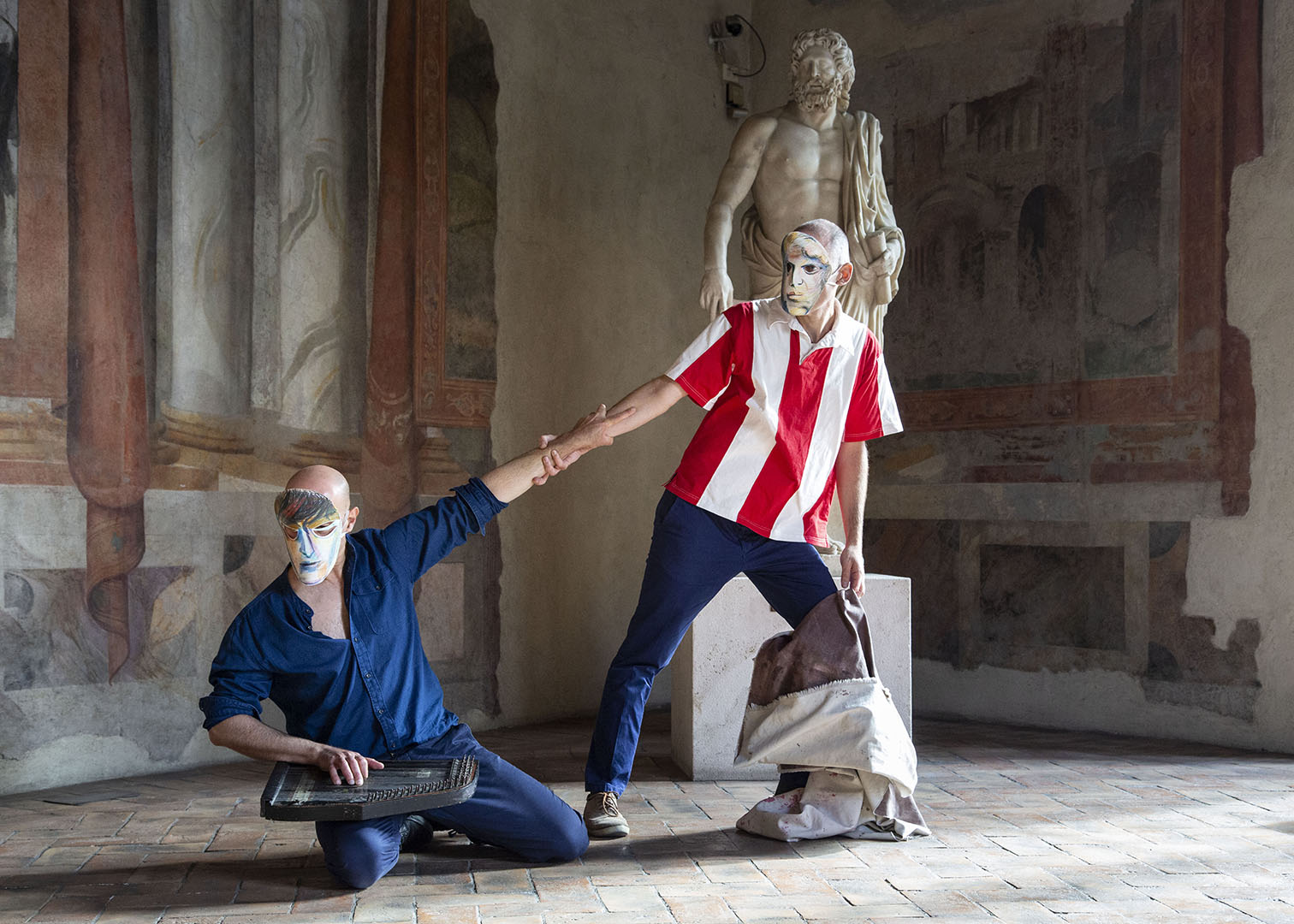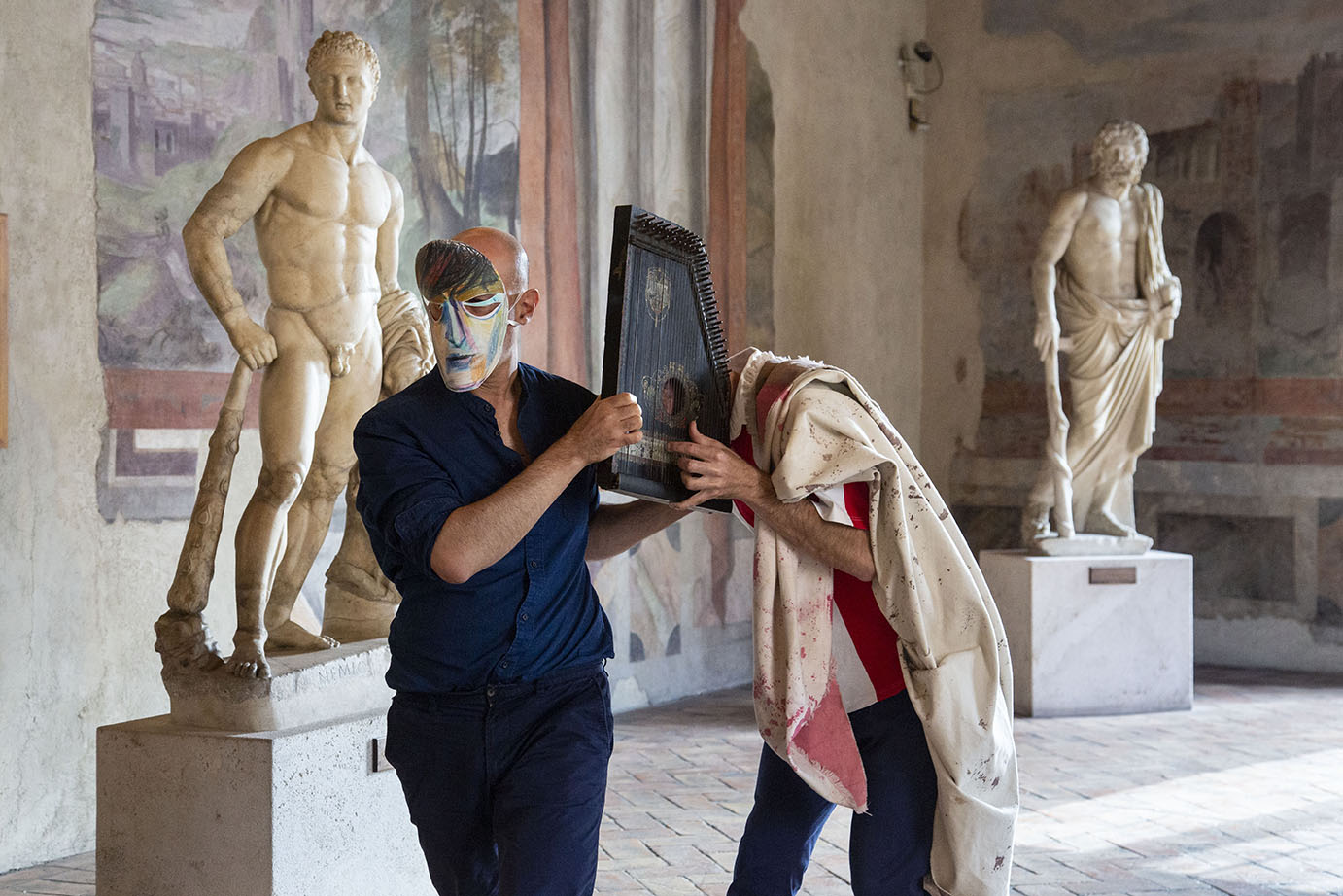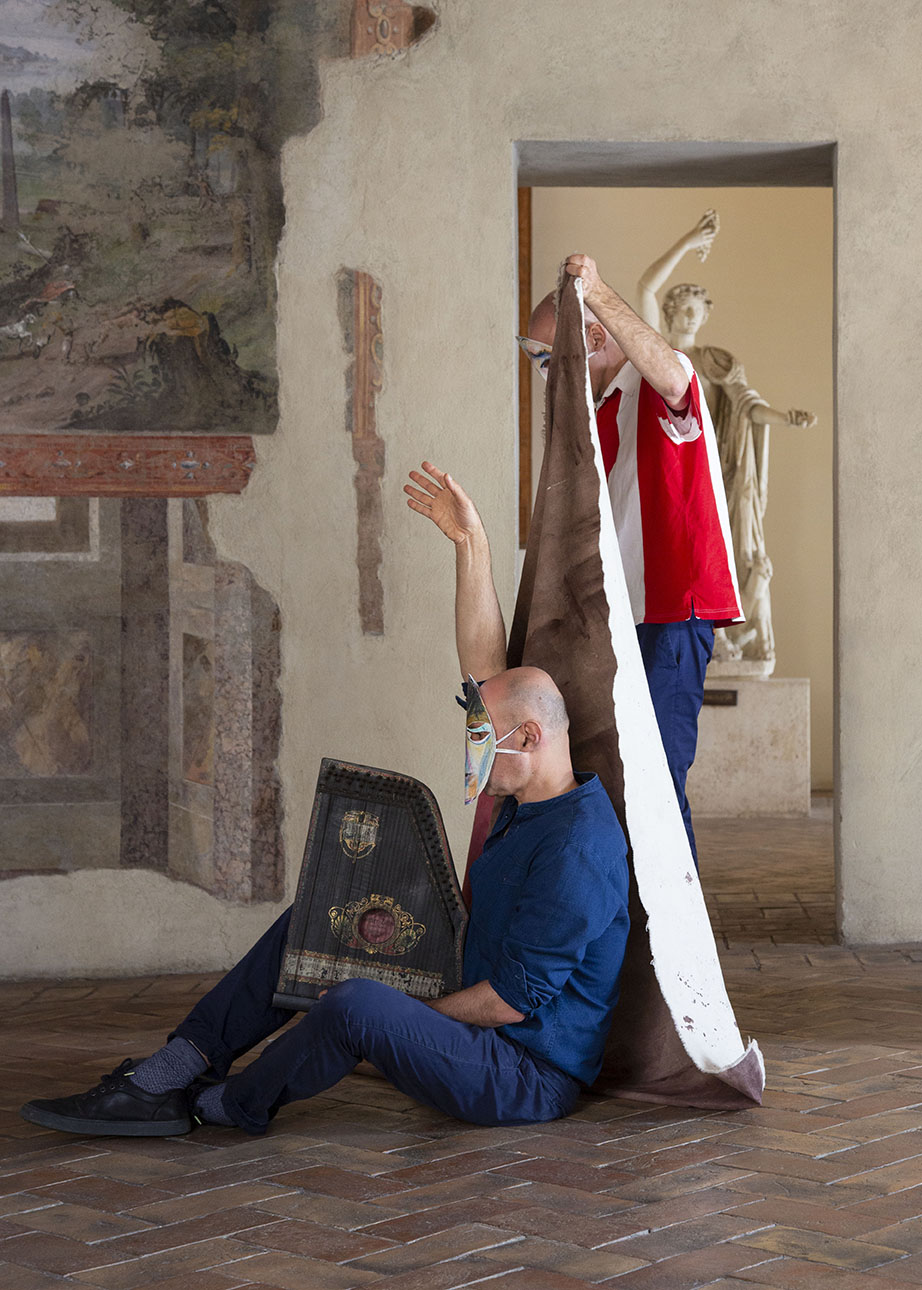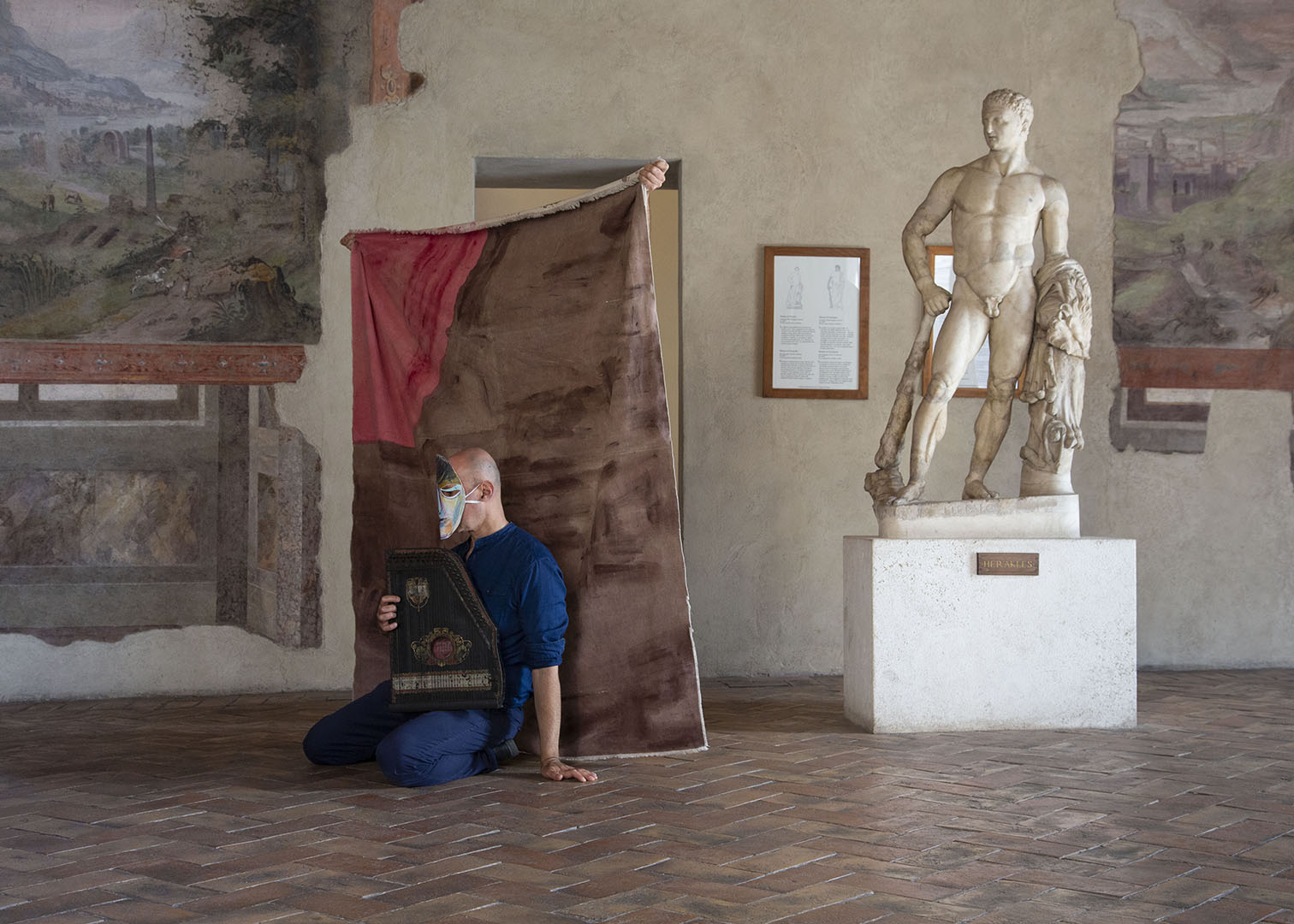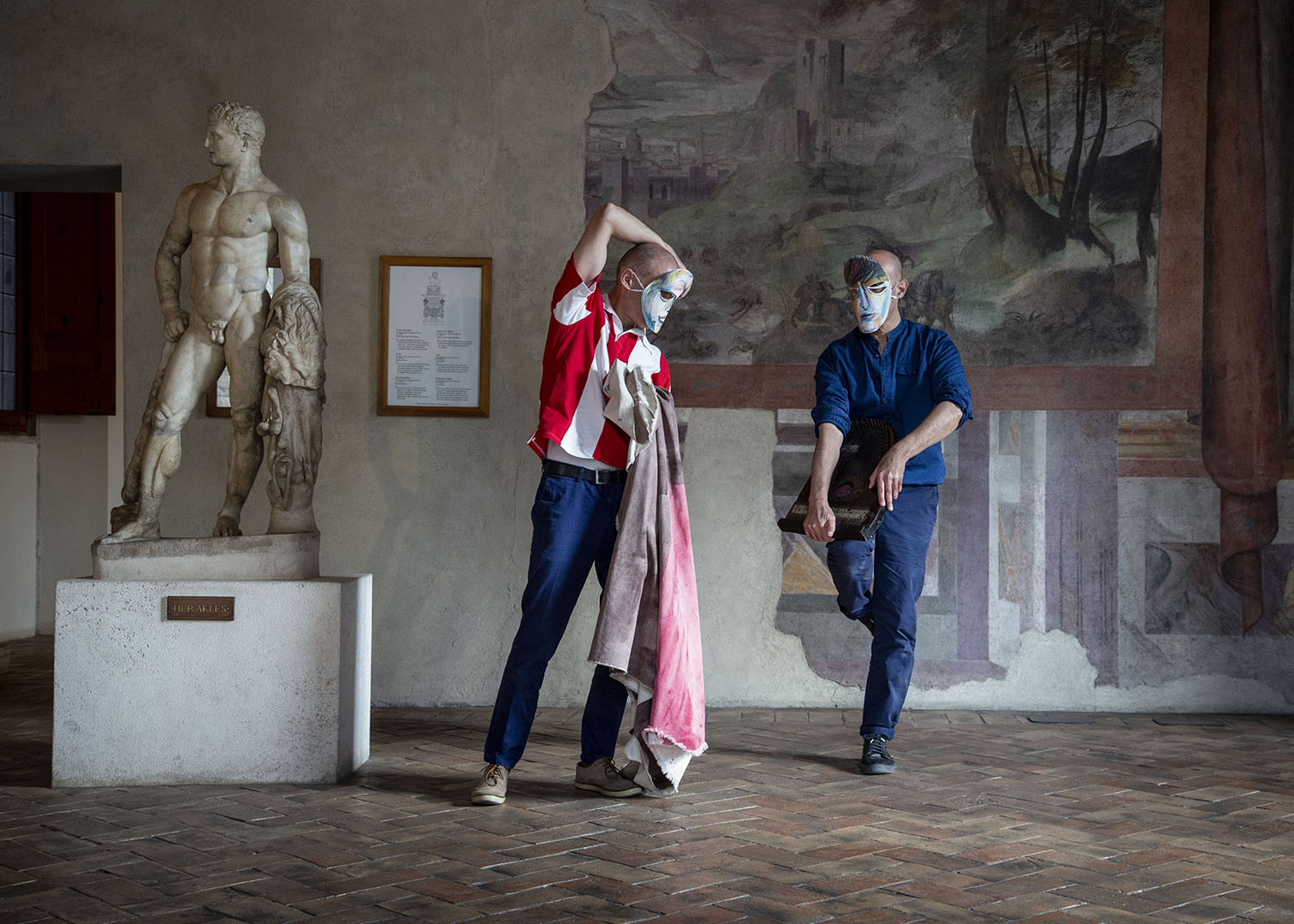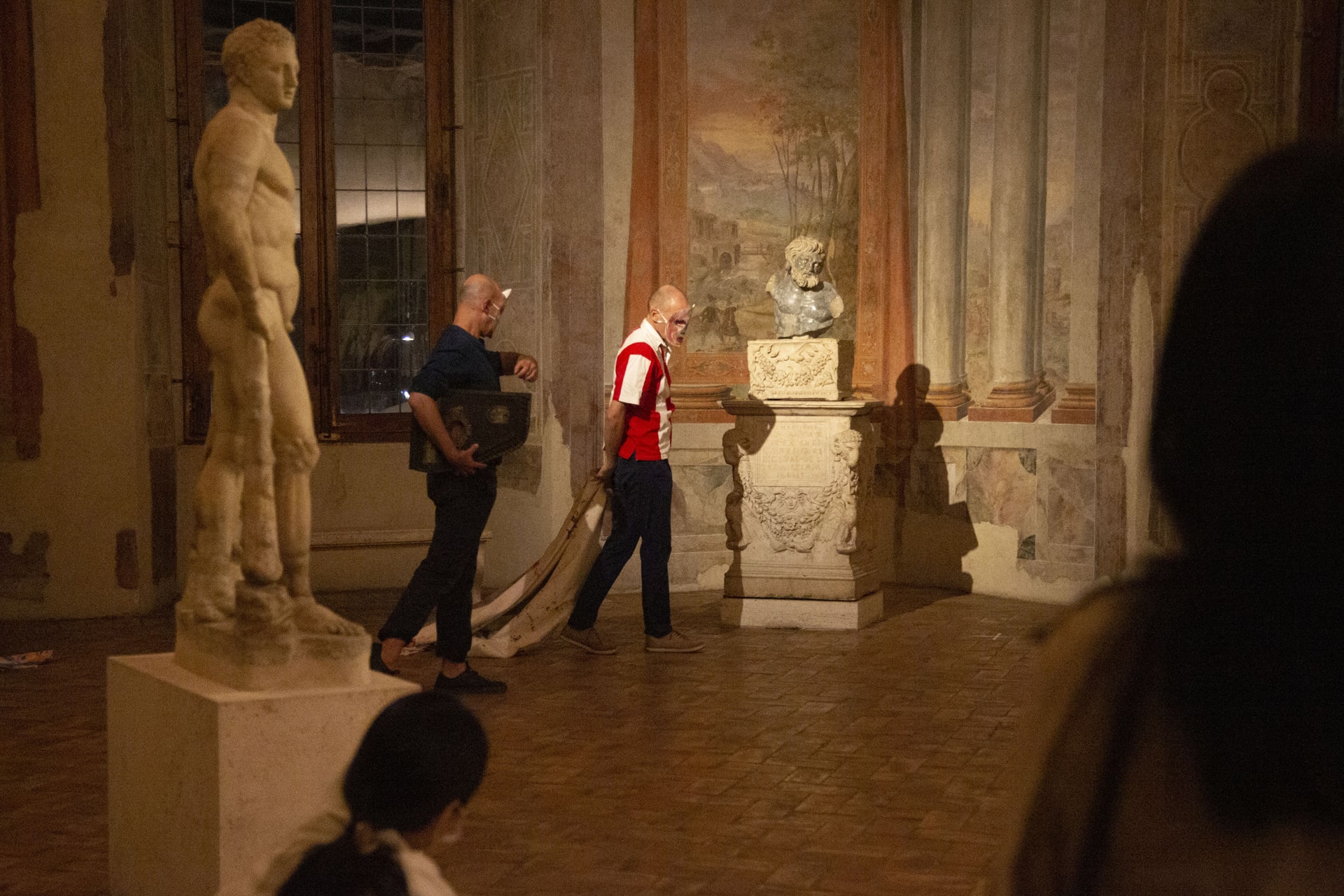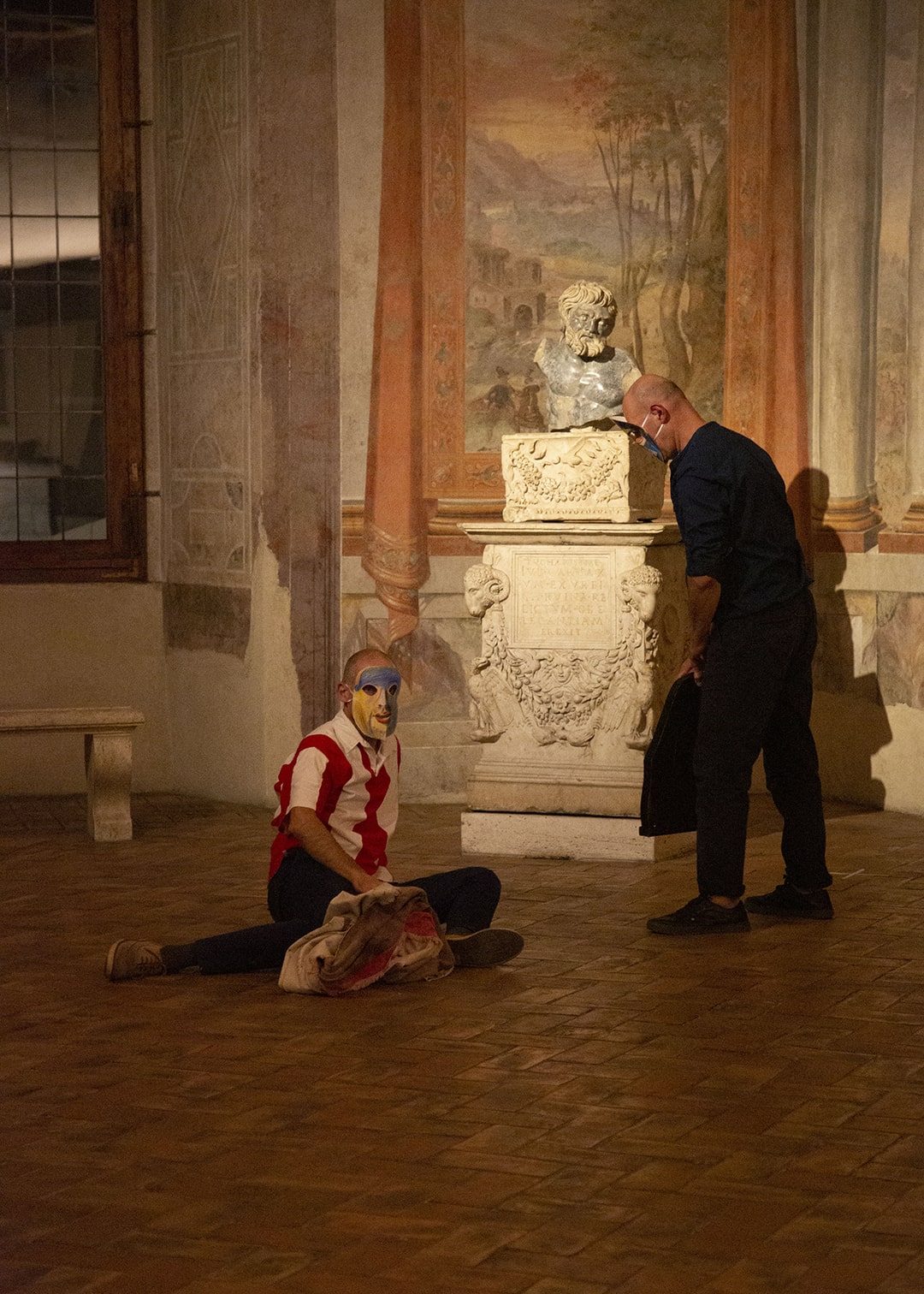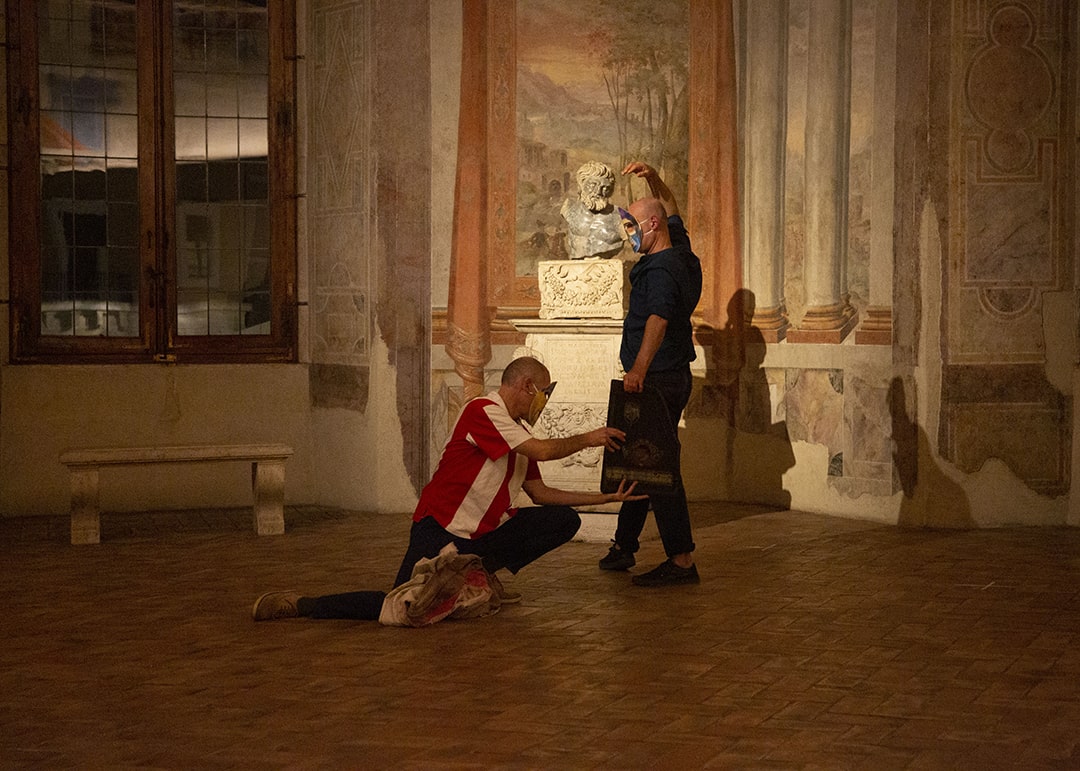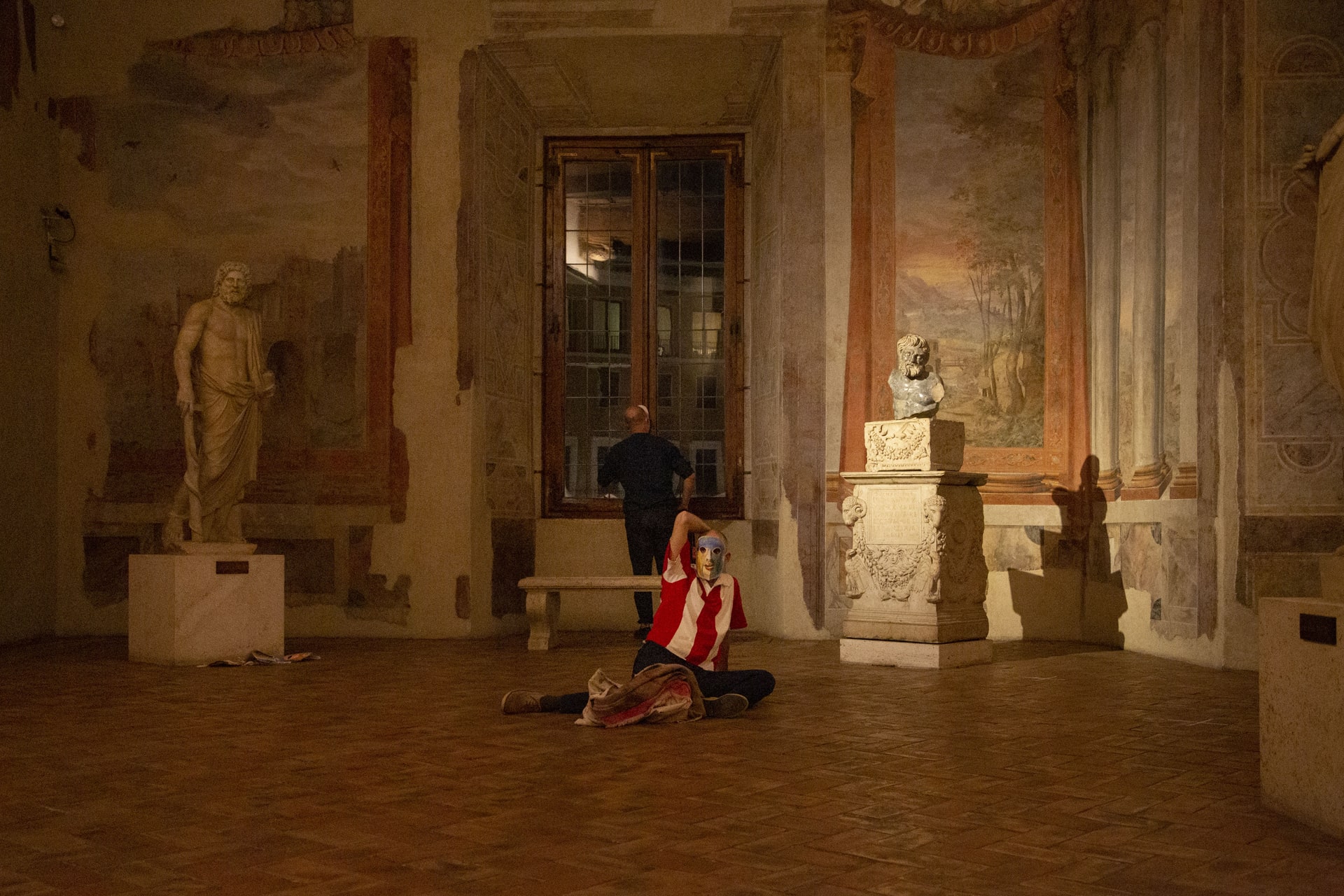Prinz Gholam
My Heart is a Poised Cithara (Il mio cuore è una cetra sospesa)
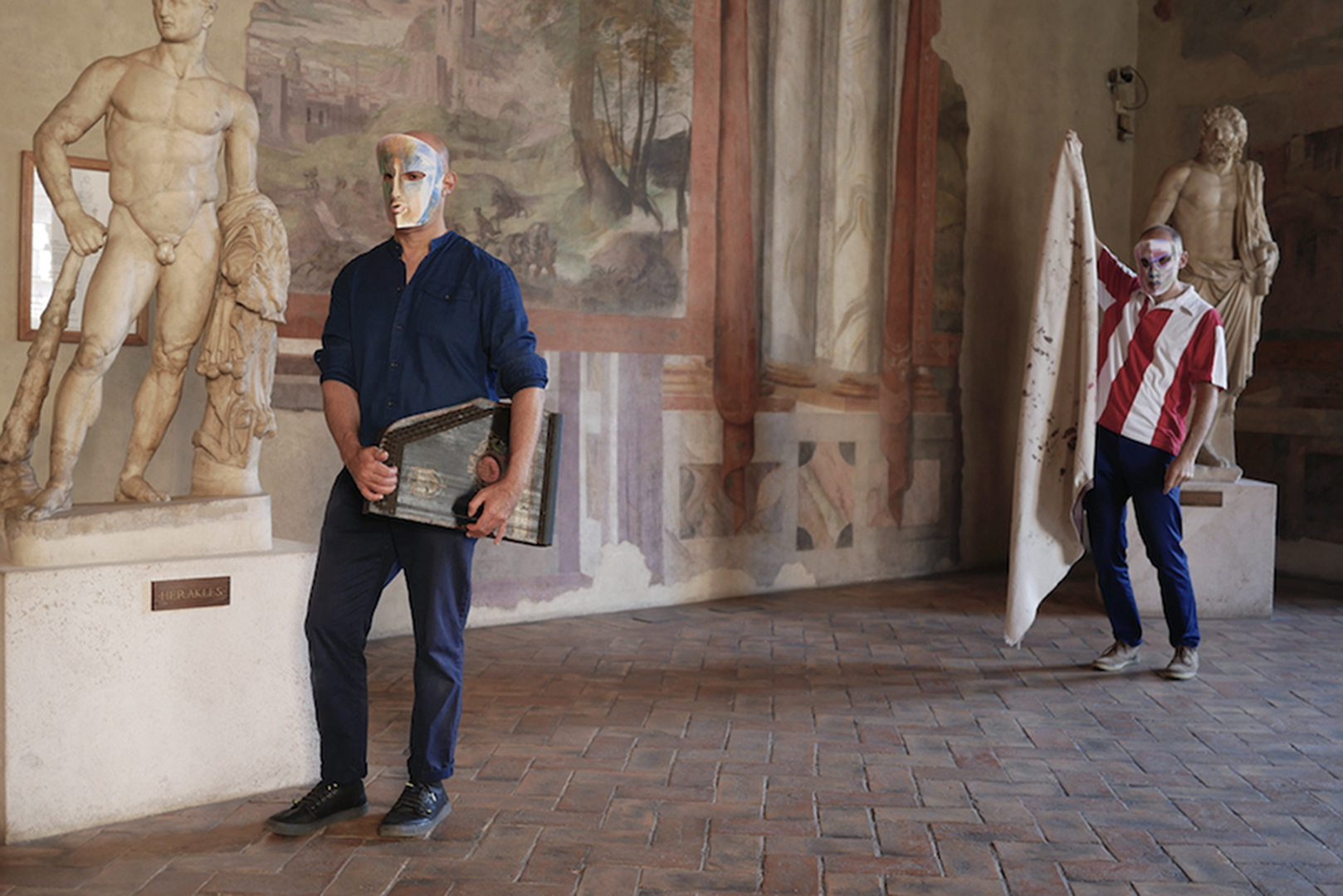 How are the normative and formal standards conventionally recognized in the field of aesthetics formed and how can we make visible our fascination and propensity to these canons? Starting from these questions, the artistic duo Prinz Gholam, winner of the Villa Massimo prize in 2020/2021, worked on a new performance for the Room of the Painted Perspectives at Palazzo Altemps, in Rome.
How are the normative and formal standards conventionally recognized in the field of aesthetics formed and how can we make visible our fascination and propensity to these canons? Starting from these questions, the artistic duo Prinz Gholam, winner of the Villa Massimo prize in 2020/2021, worked on a new performance for the Room of the Painted Perspectives at Palazzo Altemps, in Rome.
By establishing a dialogue with the figures of Hercules and Aesculapius – present in the room – the performance MY HEART IS A POISED CITHARA revisits the aesthetic canons that constitute the prototypes of beauty, perfection and masculine strength, emphasized over the centuries by classical statuary. In the sequences of slow and calibrated movements, there is a constant approach and distancing between the bodies which triggers a reversal of the normative standards, questioning the iconographic patterns and the Western aesthetic canons.
In the Room of the Painted Perspectives, filled with sculptures canonically reproduced over the centuries, the gestures of Prinz Gholam stand up as a critique consisting of similarities and profound variations that unfold in all the possible perspectives that both the body of the performers and of statues assume. In this anatomical landscape, intimacy and memories take over, and it is in this space that we can find a sense of community, in line and also in conflict with our historical-artistic past.
For almost a decade, the artistic duo has developed a performative practice that seeks to reinterpret through the body the most disparate artworks, from ancient paintings to sculptures, from contemporary art to films and media. Often performed in historically relevant places such as museums or archaeological sites, their works are a way of mapping through movement, with the intention of unveiling how our lives are influenced by processes of cultural assimilation and by discourses that aim to trace a historical continuity with a notable past.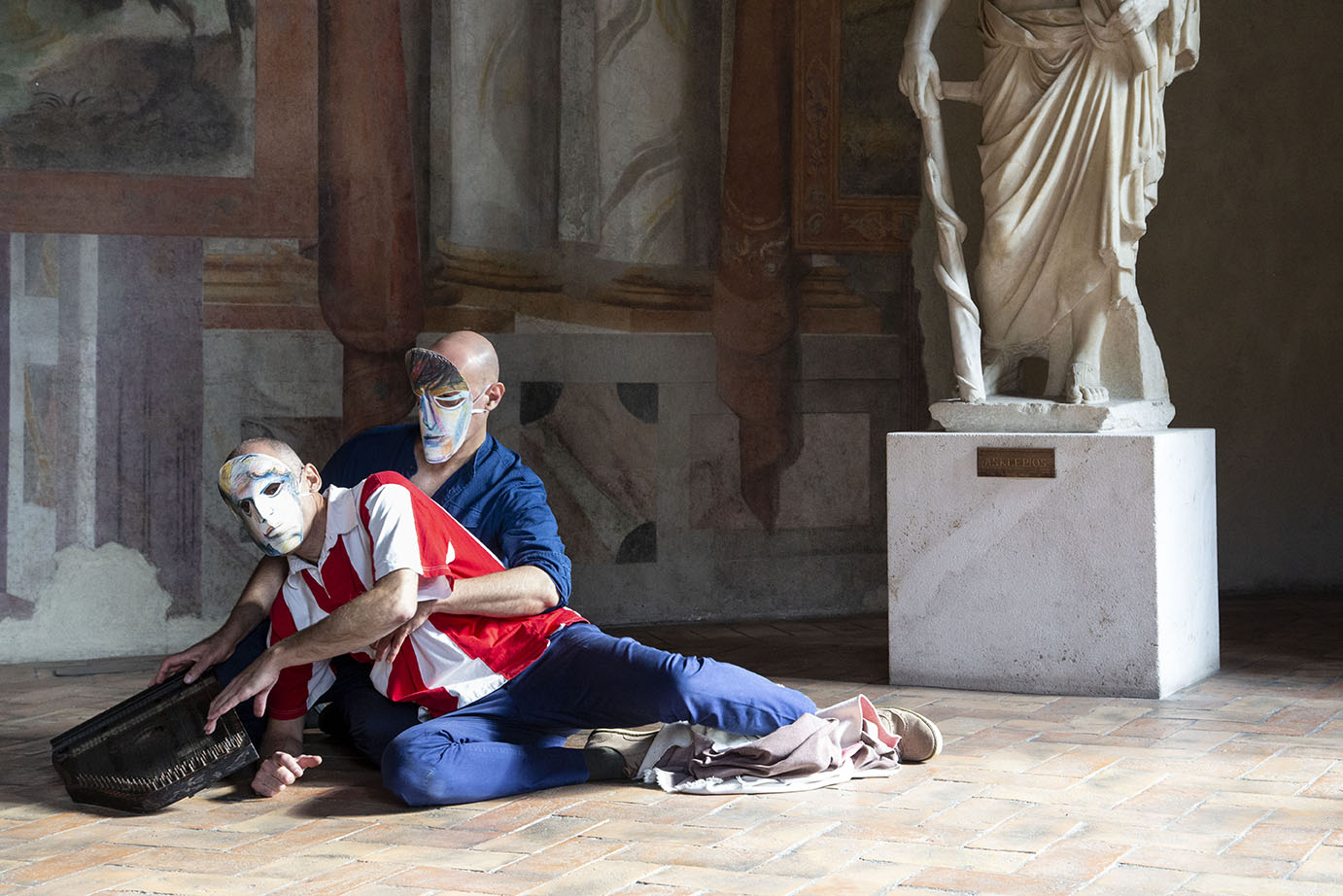
In the house of Palazzo Altemps, the sculptures represent mythological authorities. These sculptures are prototypes of depictions repeated and copied centuries over centuries. They are symbols of healing, strength, beauty, they are gods of movement and velocity. Over time they became fantasies and phantasms which are used to insist on historical continuity and normative standards. Establishing societies that look the same because they have been given the certainty that they are in direct lineage of something outstanding. Therefore culture is uncanny. These aesthetics are reproduced without considering geography, time, society, and the individual.
Buildings, pillars, towers, flanked with beautiful sculptures. Walls with beautiful paintings. Here lies the fascination with these constructed fantasies.
Our work manifests itself consciously and purposely under the influence of these canons of culture. In the performance, our physical activity as two contemporary individuals will generate issues that are psychological and physical. They bring up questions on age, on character, on being educated in a certain way, on social background, on geographical or communal origins.
All we have seen, all we have memorised and internalised is transformed through the living human presence, through gestures, timing, and sound.
Prinz Gholam
